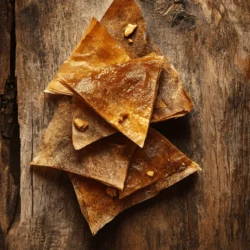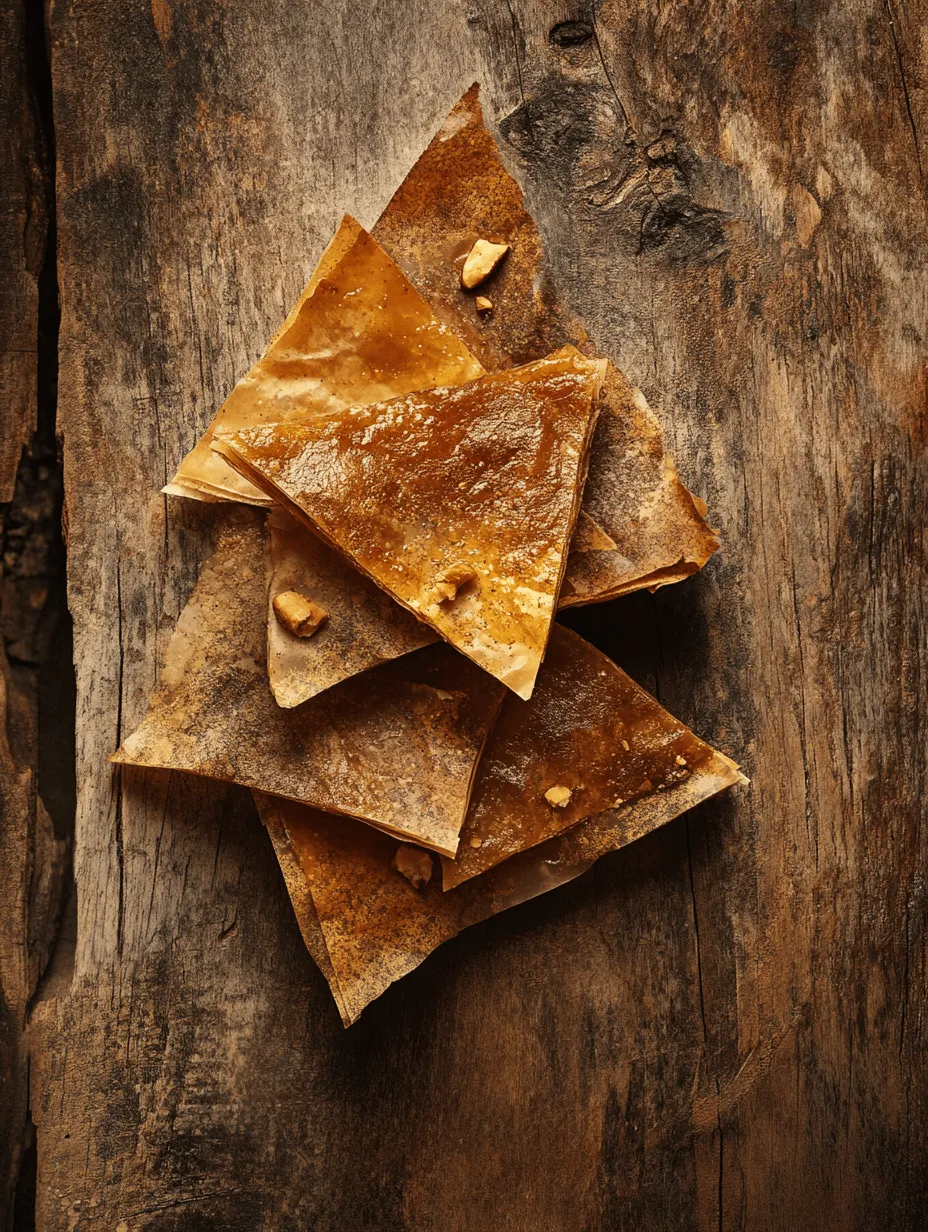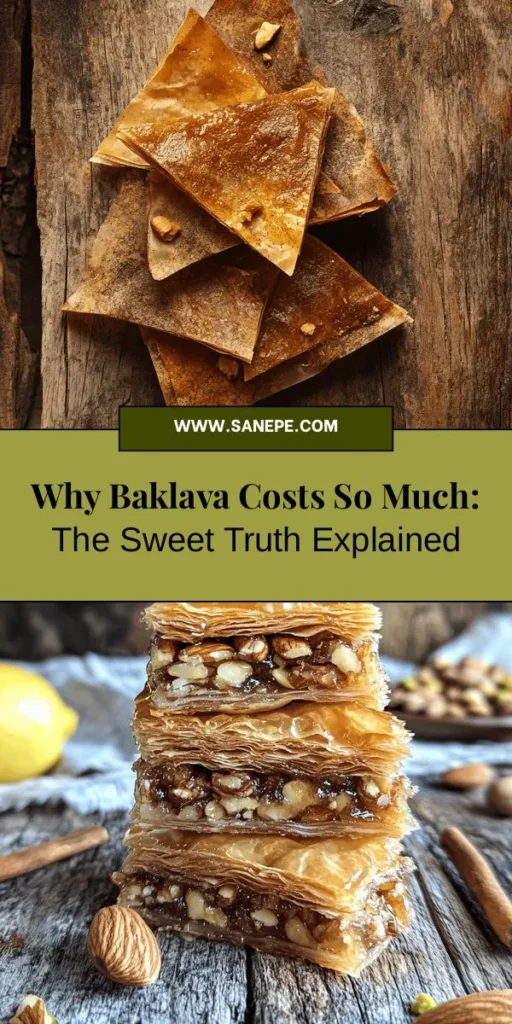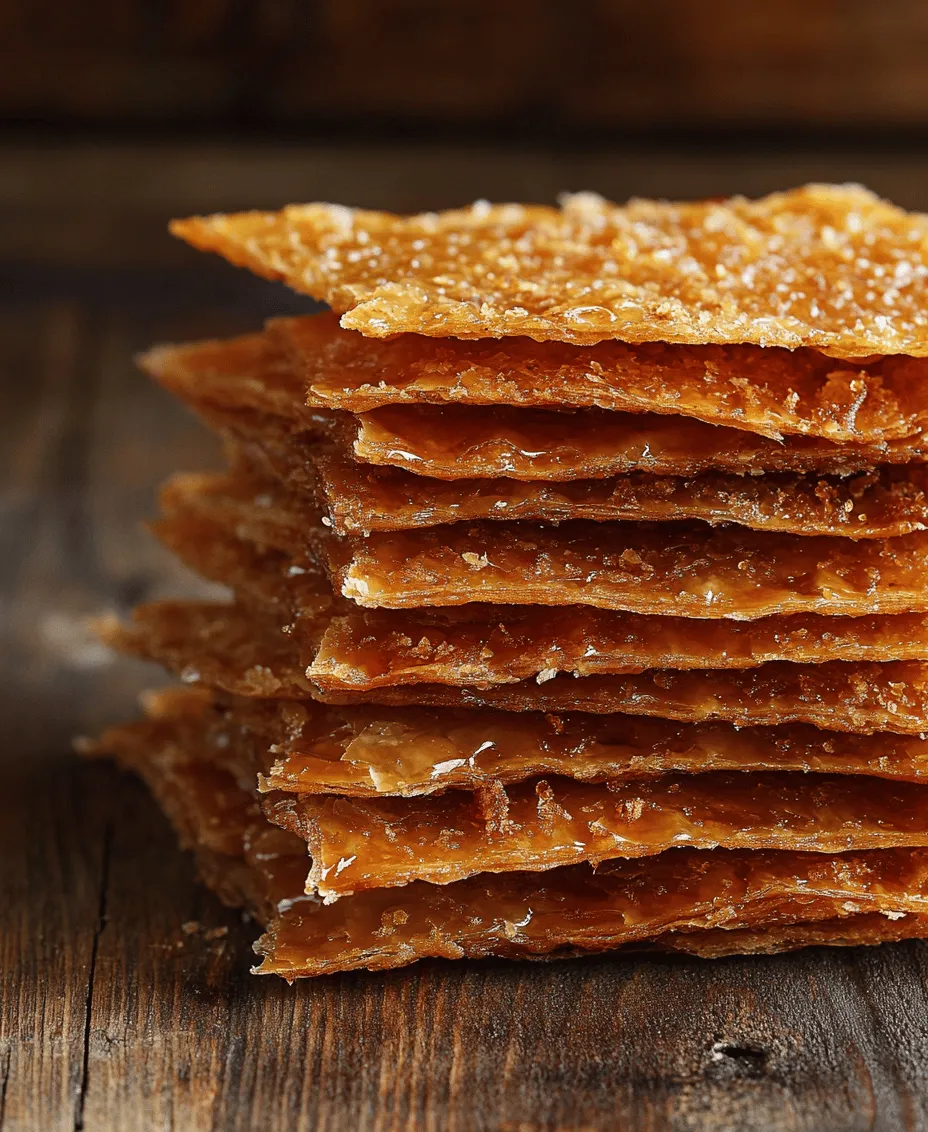Introduction
Baklava is more than just a dessert; it’s a culinary masterpiece that tells a story of tradition, craftsmanship, and cultural significance. Known for its rich flavors and delicate flaky layers, this sweet treat has captivated palates around the world. However, many people are often taken aback by its price, leading to the question: why is baklava so expensive?
The answer lies in a combination of factors that elevate this dessert from mere sweetness to a representation of artistry and heritage. From the quality of ingredients used to the intricate preparation methods, baklava’s cost reflects the love and effort poured into each piece. In this article, we will unpack the various reasons behind the expense of baklava, while also providing a comprehensive recipe for making this beloved treat at home. By the end, you will not only understand the financial investment in baklava but also appreciate the craftsmanship that makes it truly special.
Understanding Baklava: A Cultural and Culinary Treasure
Origins of Baklava: A Brief Historical Overview
The origins of baklava are as rich and layered as the dessert itself. While it is widely associated with Middle Eastern countries, its history is complex, tracing back to various cultures and regions. Many historians speculate that baklava has its roots in the ancient Assyrian Empire, where layers of dough were filled with nuts and sweetened with honey. Over centuries, the recipe evolved, influenced by the culinary practices of the Greeks, Ottomans, and Arabs, each adding their unique twist.
In the Ottoman Empire, baklava became a staple in royal kitchens, reserved for the elite and served during special occasions. This association with luxury and celebration has helped solidify baklava’s status as a cherished dessert across many cultures, often enjoyed during holidays, weddings, and religious festivities.
Regional Variations and Their Unique Flavors
As baklava spread across different regions, it adapted to local tastes, leading to a variety of interpretations. In Turkey, for instance, baklava is often made with a combination of walnuts and pistachios, drenched in a syrup flavored with rosewater. Meanwhile, in Greece, the dessert may feature almonds and is typically infused with cinnamon, giving it a distinct flavor profile.
These regional variations not only showcase the diversity of baklava but also contribute to the complexity of its preparation. Each recipe is a reflection of local ingredients and cultural traditions, further enhancing the experience of enjoying this delectable dessert.
The Role of Baklava in Celebrations and Traditions
Baklava holds a prominent place in many cultural celebrations. In Turkey, it is often served during religious holidays such as Eid, symbolizing generosity and hospitality. In Greece, it is a staple at weddings and festive gatherings, where its sweet layers symbolize joy and sweetness in life. This deep-rooted significance adds to the allure of baklava, making it not just a dessert but a cherished part of cultural heritage.
Ingredient Breakdown: What Makes Baklava Expensive?
The Cost of Phyllo Dough: Quality Matters
One of the most vital components of baklava is phyllo dough. This thin, delicate pastry is the foundation of the dessert, providing its characteristic flaky texture. While making phyllo dough from scratch can be a labor-intensive process, most bakers opt for store-bought options, which can still be costly. The quality of phyllo dough varies significantly, and premium brands made with high-quality flour and no preservatives often come at a higher price.
Purchasing phyllo dough that is expertly crafted ensures that your baklava has the perfect balance of crispiness and tenderness, which is essential for achieving that melt-in-your-mouth experience.
Nuts: A Priceless Ingredient
Nuts are another significant factor contributing to the cost of baklava. Traditionally, baklava is filled with a blend of nuts, with walnuts, pistachios, and almonds being the most common. These nuts not only provide flavor but also add a satisfying crunch that complements the softness of the phyllo layers.
However, the price of nuts can vary widely based on their type and quality. For instance, pistachios are often more expensive than walnuts due to their lower yield and the labor-intensive process of harvesting them. Additionally, quality matters; the freshest nuts with the best flavor can command a premium, influencing the overall cost of the baklava.
Sourcing and Pricing of Walnuts, Pistachios, and Almonds
When making baklava, sourcing high-quality nuts is essential. Many bakers prefer to purchase nuts in bulk to save costs, but it’s crucial to ensure they are fresh. Stale nuts can ruin the flavor profile of your baklava, making it less enjoyable.
Additionally, the geographical sourcing of these nuts can impact their price. For example, Turkish pistachios are celebrated for their rich flavor and vibrant color, often fetching a higher price due to their popularity and limited growing regions. Similarly, California-grown almonds and walnuts can vary in price depending on the season and crop yield.
The Impact of Butter Quality on Flavor and Texture
Butter is another key ingredient in baklava, playing a critical role in achieving its signature flavor and texture. The quality of butter used can significantly affect the final outcome of the dessert. High-fat, European-style butter is often preferred for its rich taste and superior melting properties.
Using quality butter ensures that the layers of phyllo dough become beautifully golden and crisp, while also lending a luxurious mouthfeel to the dessert. However, premium butter can be considerably more expensive than standard options, contributing to the overall cost of baklava.
Sweeteners: Honey vs. Sugar in Traditional Recipes
The sweetener used in baklava also influences its cost. Traditional recipes often call for honey, which is known for its distinct flavor and natural sweetness. Pure honey can be quite costly, especially if it’s sourced from local beekeepers or specialty stores.
On the other hand, some bakers opt for granulated sugar, which is more affordable. However, many purists argue that substituting honey compromises the authenticity of the baklava, as honey adds depth and complexity to the dessert that sugar cannot replicate.
Spices: The Hidden Costs of Flavor
Spices may seem like a minor component in baklava, but they can add significant costs, especially when using high-quality or specialty spices. Ground cinnamon is a common spice used in baklava, imparting warmth and richness.
However, the cost of cinnamon can vary based on its origin and quality. Ceylon cinnamon, often referred to as “true cinnamon,” is more expensive than the more common Cassia cinnamon, and its unique flavor can elevate the baklava experience. Using high-quality spices is essential for achieving a well-rounded flavor profile in your dessert.
The Art of Preparation: Time-Consuming Techniques
The Importance of Layering Phyllo Dough
One of the most critical aspects of making baklava is the technique of layering phyllo dough. This process requires patience and precision, as each layer must be brushed with melted butter to create the perfect texture. The number of layers can vary depending on the recipe, but traditional baklava often consists of at least 20 to 30 layers of phyllo dough.
Each layer contributes to the overall flakiness and richness of the final product, but achieving this requires time and careful attention. The meticulous layering process is a testament to the craftsmanship involved in making baklava.
Techniques for Handling Phyllo Dough
Handling phyllo dough can be a daunting task for novice bakers. This delicate pastry can dry out quickly, leading to tears and breakage. To prevent this, it’s essential to keep the unused sheets covered with a damp cloth while working with the layers.
Additionally, proper technique is crucial when laying down each sheet. Ensuring even distribution of butter and avoiding excessive handling helps maintain the integrity of the dough, ultimately resulting in a beautiful and delicious baklava.
Preparing the Nut Mixture: Crafting the Perfect Blend
The nut mixture is another vital component of baklava, requiring careful preparation to achieve the perfect blend of flavors and textures. Typically, nuts are chopped finely and combined with sugar and spices, such as cinnamon, to create a flavorful filling.
The proportion of nuts to sugar can vary based on personal preference, but a well-balanced mixture is key to a successful baklava. This careful crafting of the nut filling is essential for achieving that signature taste, enhancing the overall experience of enjoying baklava.
—
This sets the stage for a detailed exploration of baklava, its cultural significance, and the intricacies of its preparation. In the following sections, we will delve deeper into the recipe itself, offering step-by-step instructions to guide you through creating this exquisite dessert, allowing you to appreciate both the art and expense behind baklava.
The Precision of Cutting and Baking Baklava
Creating baklava is not just about combining ingredients; it’s an art form that requires precision in every step. The way you cut and bake baklava greatly affects its texture and flavor. Traditional baklava is made up of numerous layers of phyllo dough, which must be delicately layered and cut into perfect diamond or square shapes before baking. The key here is to ensure that each piece has an even distribution of layers, nuts, and syrup.
When cutting, it’s essential to use a sharp knife to ensure clean edges, preventing the layers from tearing. A gentle hand is necessary; too much pressure can lead to uneven portions, affecting the final presentation. Once cut, the baklava needs to be baked at the right temperature to achieve a golden-brown color without burning. The ideal baking time is typically around 30 to 40 minutes at 350°F (175°C), and keeping a close eye is crucial to achieving that perfect crispiness.
Making the Syrup: Balancing Sweetness and Flavor
The syrup is what brings baklava to life, balancing its rich, buttery layers with a sweet finish. To make the syrup, you’ll need water, sugar, and either lemon juice or honey for added depth of flavor. The basic syrup recipe involves boiling equal parts sugar and water until the sugar completely dissolves, then simmering it for about 10 minutes. Adding a splash of lemon juice not only prevents crystallization but also cuts through the sweetness, enhancing the overall flavor profile.
For those looking to experiment, consider infusing your syrup with spices like cinnamon or cardamom, or even a splash of rose water or orange blossom water for a unique twist. This infusion can elevate your baklava from a standard dessert to something extraordinary. Once the baklava is baked, the hot syrup is poured over the hot pastry, allowing it to seep into the layers, creating a luscious, sweet experience in every bite.
Why Homemade Baklava Can Still Be Costly
The Time Investment: Preparing a Labor-Intensive Dessert
One of the key reasons homemade baklava can be expensive is the time investment required. Preparing baklava is not a quick process—it involves several steps, including making the dough if you choose to go that route, preparing the filling, layering the phyllo sheets, cutting, and baking. Depending on your skill level, this can take several hours, especially if you’re making a large batch for a special occasion.
This labor-intensive process is what makes the final product so special, but it also contributes to the cost. Unlike other desserts that can be whipped up quickly, baklava requires patience and attention to detail.
Kitchen Tools and Equipment: What You Need for Success
To achieve the perfect baklava, certain kitchen tools are essential. You will need a large baking dish, preferably a rectangular one, to accommodate the layers. A pastry brush is necessary for spreading melted butter between the layers of phyllo, ensuring each layer is crisp and flavorful. A sharp knife for cutting, measuring cups, and a saucepan for making the syrup are also key components.
Investing in quality tools can elevate your baklava-making experience, but it also adds to the overall cost. However, these tools are reusable for future baking endeavors, making them a worthy investment for avid bakers.
The Learning Curve: Mastering the Technique
Even if you have the right ingredients and tools, mastering the technique of baklava-making can take practice. Each step—from layering the phyllo dough to cutting it into perfect pieces—requires skill and finesse. New bakers might find themselves struggling with the delicate nature of phyllo, which can dry out quickly if not handled properly.
This learning curve can lead to some initial failures, which can be disheartening and costly if ingredients are wasted. However, with each attempt, you’ll refine your technique, leading to better results over time.
Economic Factors Influencing Baklava Prices
Market Demand for Authentic Ethnic Foods
The rising popularity of ethnic cuisines has increased the demand for authentic baklava in recent years. As more people seek out unique culinary experiences, baklava has become a sought-after dessert in restaurants and gourmet shops. This demand often drives up prices, as establishments use high-quality ingredients and skilled labor to create their versions of baklava.
Seasonal Availability of Ingredients
Baklava relies on specific ingredients, such as nuts and spices, which can be affected by seasonal availability. For example, certain nuts like pistachios or walnuts may fluctuate in price based on the season and harvest yields. This can impact both homemade and store-bought baklava prices, as producers may need to adjust their costs based on ingredient availability.
Craftsmanship vs. Mass Production: The Artisan Touch
Baklava is often made by skilled artisans who have honed their craft over years. This craftsmanship comes at a cost, as these bakers pour their heart and soul into each batch, ensuring that every piece is perfect. In contrast, mass-produced baklava may lack the same attention to detail and quality, leading to a disparity in price and taste.
Consumers are often willing to pay more for artisanal baklava that promises authentic flavors and textures, which further explains why high-quality baklava can command higher prices.
Comparing Costs: Homemade vs. Store-Bought Baklava
Ingredient Costs: A Detailed Comparison
When comparing homemade baklava to store-bought options, it’s important to analyze the ingredient costs. While homemade baklava may require an initial investment in bulk ingredients, it often leads to a more cost-effective solution if making large quantities.
For instance, a pound of nuts can be quite expensive when purchasing in smaller quantities, but buying in bulk can significantly reduce costs. The same goes for phyllo dough, butter, and spices. When you break down the cost per serving, homemade baklava can prove to be a more economical choice, especially for gatherings or special occasions.
The Value of Homemade Quality
One of the most compelling arguments for making baklava at home is the quality of the final product. Homemade baklava allows you to control the ingredients, ensuring freshness and flavor. You can choose high-quality nuts, natural sweeteners, and organic butter, which can elevate the taste and health profile of your dessert.
Additionally, homemade baklava can be customized to suit dietary preferences—whether it’s reducing sugar, choosing gluten-free phyllo dough, or adding unique flavorings. This level of personalization can often justify the cost and effort put into making baklava from scratch.
Taste Test: Is It Worth the Expense?
Ultimately, the taste test is the best way to determine whether homemade baklava is worth the expense. Many who have tried both homemade and store-bought versions often find that the freshness and richness of homemade baklava simply cannot be matched by commercially produced options.
The process of making baklava itself can be a rewarding and enjoyable experience, especially when shared with family or friends. The flavors and textures you create at home provide a sense of accomplishment that enhances the enjoyment of this traditional dessert.
Health Considerations: Understanding Baklava’s Nutritional Profile
Balancing Indulgence with Health
Baklava is undoubtedly a rich dessert, laden with butter, nuts, and syrup. While it is a delightful indulgence, it’s important to consider its nutritional profile. A single piece of baklava can contain significant amounts of sugar and fat, which means moderation is key.
However, baklava does provide some nutritional benefits, such as healthy fats from nuts, fiber, and essential vitamins. By enjoying baklava as an occasional treat rather than a daily indulgence, you can appreciate its flavors while maintaining a balanced diet.
Portion Control and Eating Practices
Practicing portion control is essential when enjoying baklava. Due to its rich nature, a small piece is often sufficient to satisfy your sweet tooth. Sharing a plate of baklava with friends or family can also help manage serving sizes while allowing everyone to enjoy this delicious dessert together.
Additionally, taking the time to savor each bite can enhance the experience, making the indulgence feel more fulfilling without the need to overindulge.
The Role of Baklava in Mediterranean Diets
Baklava holds a special place in Mediterranean cuisines, often served during celebrations and festive occasions. While it is rich in calories, it can still fit within a Mediterranean diet, which emphasizes whole foods, healthy fats, and moderation.
When consumed alongside a balanced diet rich in fruits, vegetables, whole grains, and lean proteins, baklava can be enjoyed without guilt. Its rich flavors and textures provide a delightful contrast to lighter dishes, making it a beloved addition to any meal.
Conclusion
Baklava is more than just a dessert; it is a labor of love, steeped in history and tradition. Understanding the costs associated with its ingredients and preparation reveals why it is often seen as an expensive treat. By making baklava at home, not only can you appreciate its rich flavors, but you also engage in a culinary tradition that celebrates craftsmanship and cultural significance.
As you enjoy each bite of your homemade baklava, you may find that the experience is worth every penny spent. Whether you choose to indulge in a store-bought version or embark on the journey of making it yourself, baklava remains a cherished dessert that brings people together, highlighting the beauty of shared culinary experiences.



